Effects of the Endocrine-Disrupting Chemicals, Vinclozolin and Polychlorinated Biphenyls, on Physiological and Sociosexual Phenotypes in F2 Generation Sprague-Dawley Rats
- PMID: 30212226
- PMCID: PMC6375392
- DOI: 10.1289/EHP3550
Effects of the Endocrine-Disrupting Chemicals, Vinclozolin and Polychlorinated Biphenyls, on Physiological and Sociosexual Phenotypes in F2 Generation Sprague-Dawley Rats
Abstract
Background: Exposure to endocrine-disrupting chemicals (EDCs) during gestation influences development of the F1 generation offspring and can result in disease and dysfunction in adulthood. Limited evidence suggests consequences on the F2 generation, exposed as germ cells within the F1 fetus. These F2s provide a unique window into the programming effects of EDCs.
Objective: This study assessed intergenerational effects of EDC exposure on adult physiology and behavior in Sprague-Dawley rats.
Methods: Pregnant rats were exposed to either a polychlorinated biphenyl (PCB) mixture, Aroclor 1,221 (A1221), the fungicide vinclozolin (VIN), or the vehicle (VEH) (6% dimethylsulfoxide in sesame oil) alone. A1221 is weakly estrogenic, while VIN is antiandrogenic, enabling us to compare different classes of EDCs. The F1 male and female offspring were bred to generate the paternal- and maternal-lineage F2 generation. This F2 generation was assessed for physiological outcomes, ultrasonic vocalizations (USVs), and sexual behavior in adulthood.
Results: Each EDC caused phenotypic effects in a sex- and lineage-dependent manner. The most robustly affected group was the paternal-lineage males. F2 VIN paternal male descendants had increased body weight throughout the lifespan, lower concentrations of circulating estradiol, and lower adrenal and testicular indices. Both VIN and A1221 paternal-lineage males also exhibited the greatest number of changes in the characteristics of USVs in response to an opposite-sex animal and changes in sexual behaviors in a mating test.
Conclusion: Exposure of rats to EDCs at the germ cell stage led to differences in the physiological and behavioral phenotype later in life, especially in males. This finding has implications for multigenerational physiological and reproductive health in wildlife and humans. https://doi.org/10.1289/EHP3550.
Figures



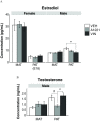

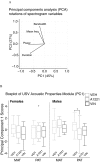
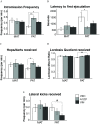
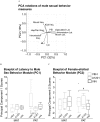

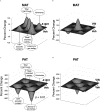
References
-
- Agency for Toxic Substances and Disease Registry. 2000. Toxicological Profile For Polychlorinated Biphenyls (PCBs). 1–948. - PubMed
Publication types
MeSH terms
Substances
Grants and funding
LinkOut - more resources
Full Text Sources
Other Literature Sources
Miscellaneous

